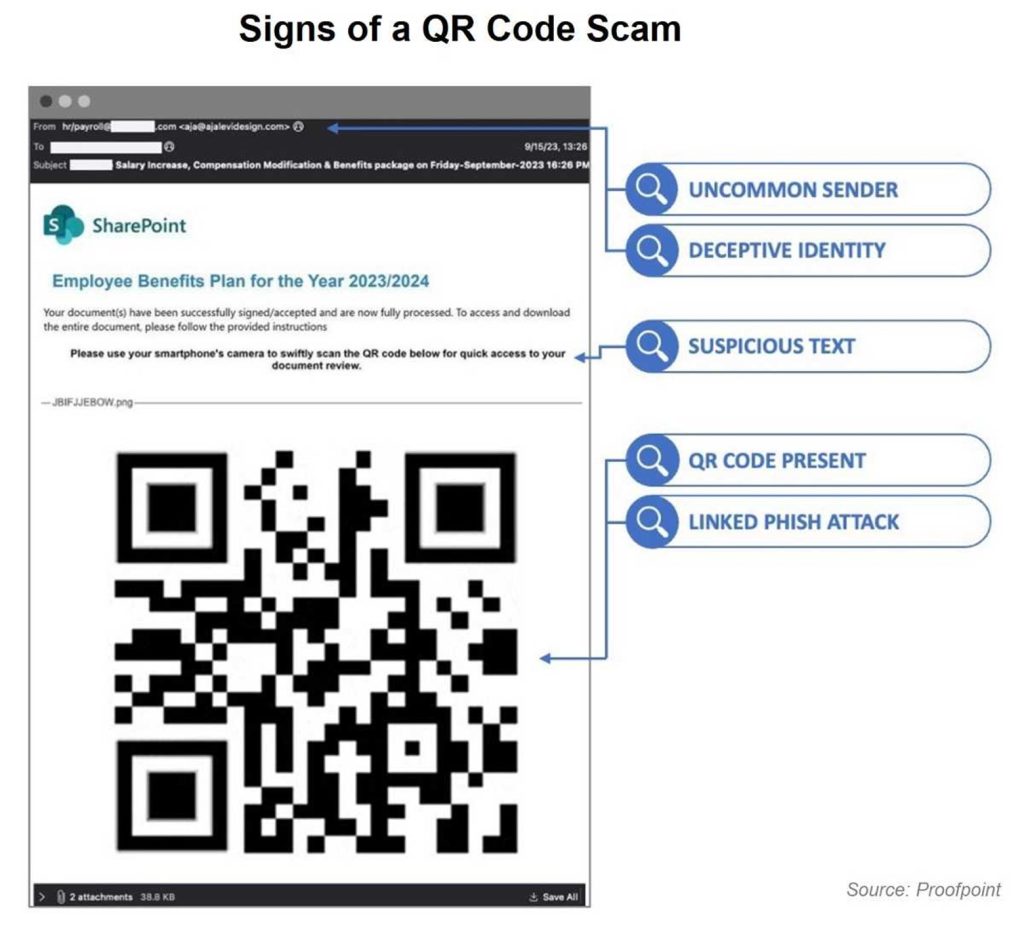In our fast-paced digital world, QR (quick response) codes have gained immense popularity. These codes are now found everywhere, from TV screens to product packaging and websites. However, while we appreciate their convenience, cybercriminals are also taking advantage of them for malicious purposes.
To help you enjoy the benefits of QR codes safely, here are some essential security tips:
Be Skeptical
Approach QR codes with the same skepticism you apply to other tech tools. Just as you verify suspicious emails and texts, you need to scrutinize QR codes as well. A compromised QR code can lead you directly to a hacker’s website, where they may steal your personal information, passwords, and money or even infect your device with malware.
Examine Public QR Codes
Be cautious of QR codes found in public places. Cybercriminals may manipulate these codes by placing a malicious one over the original on posters, flyers, menus, and other materials. Check closely for any signs of tampering—look for codes that seem out of place, are oddly sized, or have unusual markings.
Check the URL
When scanning a QR code that redirects you to a webpage, carefully inspect the URL for any spelling errors. Cybercriminals often create fake URLs that closely resemble legitimate ones. These “spoofed” websites aim to steal your personal information. If you encounter a spoofed banking site, for example, any data you enter could fall into the hands of criminals.
Use Built-in Features When Possible
Before downloading a QR scanning app, first check if your device’s camera has a built-in QR scanning feature. If you do need a separate app, only download it from official sources like the Google Play Store or the Apple App Store. Avoid third-party app stores, as they are often less secure and may contain malicious software.
Consider Your Purpose for Scanning
Think carefully about why you’re scanning a QR code. While scanning for quick information is generally safe, use caution if the code is linked to financial transactions or personal information. Whenever possible, type the legitimate web address directly into your browser and bookmark it for future access.
Keep Your Device Updated
Regularly update your device’s software and use antivirus software. Software updates fix security vulnerabilities, and antivirus programs help protect against malware. Don’t delay keeping your device secure.
In a world where a simple QR code scan can expose you to risk, practicing a security-minded approach is essential for your safety.

For more tips on protecting your personal information, visit Mid Oregon’s Security and Fraud Page: https://ow.ly/hjHm50V9XE1.
Content provided by Stickley on Security.





